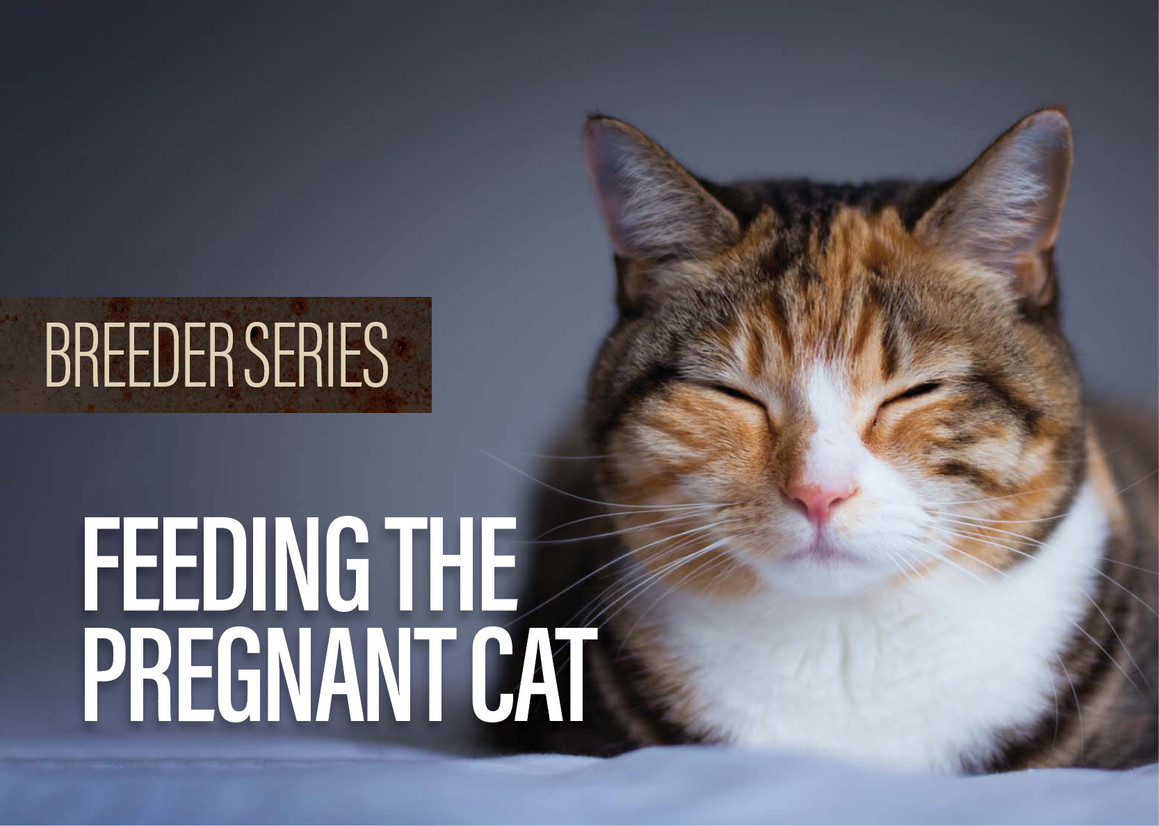Feeding The Pregnant Cat
Just one of the great things about choosing to feed a species appropriate raw diet is that it can be fed to cats of all ages and through all life stages, even during pregnancy and lactation. A few minor changes can make raw feeding easy for you and enjoyable for your pregnant cat.
During the first two trimesters of pregnancy (the first 6 weeks), very little needs to change to the diet. You may find certain proteins are more enjoyable for your cat and little additions like goat milk make the meals more appealing when your girl’s appetite may not be normal. Generally, toward the end of the second trimester (5-6 weeks), when kittens start to grow more quickly, your girl may have an increased appetite. It is a good idea to feed more frequently throughout the day in three meals, often times 1.5 – 2 times her usual daily portion.
By the third trimester (week 6 and onward) food should be plentiful and frequent (at will), while carefully managing weight to prevent excess weight gain. The size of the litter, if known, can help to determine feeding portions. For example, if your cat is carrying a litter of 3, she would probably need to eat less than if she was carrying a litter of 9.
In the final stage of feline pregnancy, it is important that the calcium intake isn’t too high, and offering extra Vitamin B to assist those developing kittens can be beneficial. This can be done by increasing the organ meat intake and feeding recipes with a lower bone content. Offering our Beef Organ Blend and more red meats like Pure Beef, Lamb and Pork are great choices. We do not recommend feeding meal replacement bones such as necks and feet at this time. When nearing the end of pregnancy, it is best to offer multiple meals (3-4 daily) as the kittens are growing rapidly and taking up a lot room, making it difficult for mom to eat large meals.
Feeding a Nursing Mom
Once the kittens are born, it is important to increase calcium intake to help support milk production. This is when some extra meal replacement bones are a great choice along with higher calcium meal options like chicken, turkey and duck proteins. The extra organ meat is not necessary any longer and you may find that offering it may cause loose stools.
During the first weeks of your kittens lives, your cat will need a lot of calories to turn into milk to feed her kittens, and it is important to feed her often throughout the day. For some cats, at will feedings are great but for others, 3-5 meals are sufficient and it’s not uncommon for a new mom to eat up to 2.5 times her normal food amount daily. Just as in the last trimester of her pregnancy, the size of the litter will determine food portions. If she’s feeding 2-3 kittens, chances are that she will need much less food than if she were nursing a litter of 10. During this time, you’ll need to keep a very close eye on body condition – feeding enough to ensure mom continues to produce milk to feed her kittens but not so much that she’s gaining excess weight.
If she struggles to maintain a healthy body condition, you can easily increase calorie intake by adding extra fat to the diet. Some great options are Quail Eggs and whole sardines fed in addition to the regular meal portion.
When it’s time to start weaning, it’s very important to slowly reduce food intake. This will slow down mom’s milk production, preparing for complete weaning.
Note: During pregnancy and lactation always adjust feeding portions according to body condition score.
Recent Posts
-
Fire Safety for Dog Owners
We’re honoured to welcome Fire Chief Dave Upper of St. Catharines, Ontario, as a guest co
-
Ahiflower: A new earth-friendly Omega choice
Fish oils are a formidable and essential component of a pet’s diet, benefitting skin and coat
-
Hydration Matters
Why Your Pet May Still Be Dehydrated (Even with a Full Water Bowl) Hydration is probably one o





